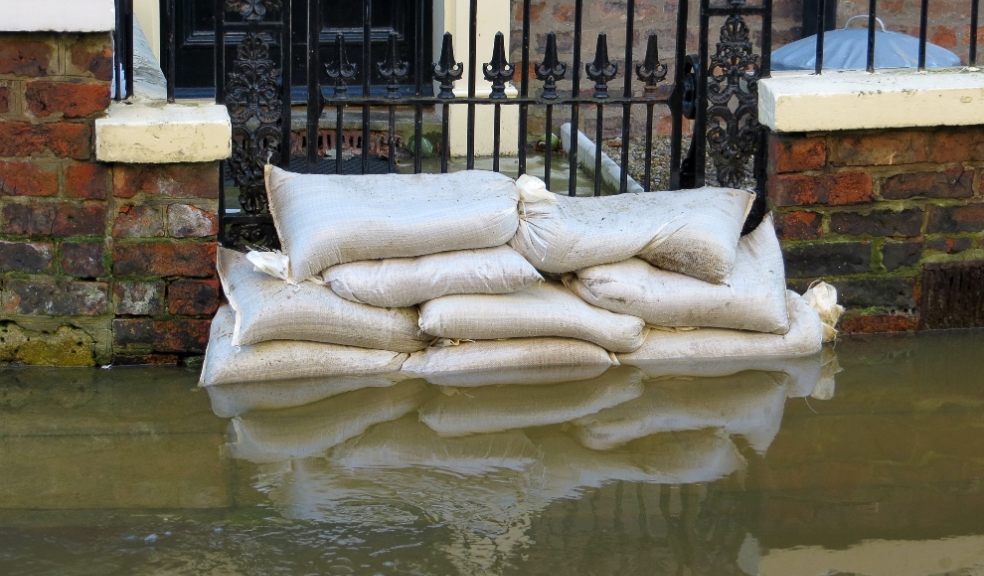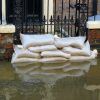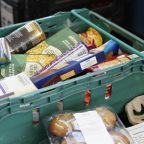
Those living in the South West unknowingly put their most prized possessions at risk by not protecting homes from flooding
Despite technology and gadgets becoming commonplace in most households, paper-based possessions and heirlooms are the items Brits still prize the most.¹ Yet the majority of people are failing to keep these unique or difficult to replace items in a safe place, according to new research from Flood Re, the joint initiative between the UK insurance industry and the UK Government to promote the availability and affordability of flood insurance.
Most people living in the South West of England would choose to save unique, sentimental and priceless items from their home if they had to evacuate in the event of a flood, such as family photographs, their passport, heirlooms and other keepsakes.
Despite these items being most prized, they are the possessions many Brits are putting most at risk. As many as 1 in 4 homes² are currently at risk of flood, with climate change continuing to increase the likelihood of flood events across the UK. The majority have little to no protection from permanent loss or devastating water damage¹, storing them in places in the home most at risk to flooding.
According to the research of 2,000 UK adults, many people currently keep family photographs (68%), important documents such as birth certificates and insurance policy documents (38%) and family heirlooms or items they have inherited (44%) on the ground floor of or cellars/basements in their homes, leaving these items vulnerable should a flood occur. Without advanced warning and preparing in advance, floods can happen quickly, meaning that people may have limited time to react and save these items before water enters their home – for example by keeping items upstairs or elevated from the ground.
Table 1: Proportion of those living in the South West who keep household items on the ground floor or cellars in their homes
|
Household items |
Proportion of those living in the South West who keep item(s) on the ground floor or cellar/basement |
|
Family photographs |
68% |
|
Family heirlooms / items you’ve inherited |
44% |
|
Important documents (birth certificates / insurance policy documents and so on) |
38% |
|
Sentimental items and keepsakes (e.g., children’s drawings) |
38% |
|
Passports |
33% |
|
Wedding album or related items (e.g., wedding dress) |
28% |
Source: Flood Re, March 2023
Despite being stored in the most at risk areas of the home, these possessions the items people prioritise taking with them in the event of a flood, and would be heartbroken to lose – particularly irreplaceable paper items such as important documents such as birth certificates and insurance policy documents, passports, family photographs. Jewellery, clothes and gadgets are the items least likely to be prioritised.
The research also revealed both the financial and emotional cost of storing these items in at risk places. More than 1 in 4 (29%) said that the item(s) they’d save first would be priceless, with no amount of money about to make up for the loss. By contrast, the average cost of material goods would cost £493 to replace on average if lost.
Table 2: Top household items that those living in the South West would want to rescue in the event of a flood
|
1 ~ |
Passports |
|
2 ~ |
Important documents (birth certificates, insurance policy documents and so on) |
|
3 |
Family photographs |
|
4 |
Bike(s) |
|
5 |
Laptop(s) / tablet(s) / desktop computer(s) |
|
6 |
TV(s) |
|
7 ~ |
Sentimental items and keepsakes (e.g., children’s drawings) |
|
8 ~ |
Family heirlooms / items you’ve inherited |
|
9 |
Wedding album or related items (e.g., wedding dress) |
|
10 |
Other gadgets |
|
11 |
Clothes |
|
12 |
Jewellery |
|
13 |
Children’s toys |
Source: Flood Re, March 2023
Andy Bord, CEO, Flood Re commented: “As many as 1 in 4 properties in the UK are at risk of flooding and this number will increase as the planet gets warmer and wetter as a result of climate change. This research shows people are unwittingly putting their most prized and cherished possessions at risk. There are simple steps people can take to avoid the emotional cost of losing irreplaceable items and the financial cost of replacing material items in the event of a flood.
“We can’t stop floods from happening altogether. But there are a number of things you can do to protect your home and the items you cherish. If you have been flooded before, or think you might be at risk, looking for ways to adapt your home to make it more resilient will prevent loss and distress.”
Flood Re marks one-year anniversary of Build Back Better
The research comes as Flood Re marks one year since the introduction of the world-first initiative Build Back Better – a scheme whereby participating home insurance providers can offer customers access to reimbursement costs of up to £10,000, over and above work to repair damage and loss caused by a flood. These funds will mean that flood victims can adapt their homes to ensure they are better protected against future flooding, by installing measures such as raised electrical sockets, self-closing air bricks, non-return valves, along with flood resistant doors and the replacement of wooden floors with waterproof tiling and grout. The scheme also covers the cost of surveys to understand the flood risk and potential mitigation of individual homes.
Andy Bord, CEO, Flood Re commented: “Build Back Better’s success and widespread industry support so far is a fantastic start, meaning more householders will see a reduction in the loss, cost and distress caused by flood events in the future. However, there is still progress to be made to ensure it becomes a standard part of home insurance policies, as we all work together to adapt UK homes to make them more resilient to flood and climate change.”
Flood Re offers tips for householders about how to adapt their homes
1. Make sure you know your own flood risk. Sign up for free flood warnings and make sure you’re clear on your plan of action should the worst happen
2. If you know a flood is coming and you think your home might be at risk, your personal safety is the most important thing to consider. Do not do anything that may put yourself or your family in danger, and ask yourself whether it is necessary to evacuate your home immediately.
3. If you have time:
a. Put together a ‘flood kit’ containing money and cards, mobile phones and chargers, key contact numbers, a torch, a first aid kit and any medication, your insurance policy details and other important documents. You’ll need these to report damage, alert the relevant parties and stay in touch with your insurer.
b. If possible, move any valuable or sentimental items, such as photographs and electricals to the highest point in your home – or take them with you. You should also move your car to an area less likely to be flooded.
c. Lock your windows and doors.
d. Let your family and friends know where you’re going and how they can contact you.
4. But if you know you live in a high flood risk area, there is one major step you can take to mitigate the damage, quicken the repair process and get you back into your home sooner. Homeowners and businesses can install Property Flood Resilience (PFR) measures that will offer protection by adapting the property to this risk, slowing the speed at which water can enter.
Far superior to traditional sandbags which often only filter the water, this can cover any of the following:
a. Solid wood internal doors and a flood resistant front door
b. Putting a fridge and other white goods on raised areas
c. Using tiled floors with waterproof adhesive
d. A separate electrical circuit for upper and lower floor and moving plug sockets to higher points on walls
e. Using self-closing airbricks and water-resistant plaster
While these measures will involve some expense, they will pay for themselves in the long term and reduce the distress flooding causes. For those who have experienced a flood, these can be installed as part of the repair process to ensure the property is built back better. For homeowners who are worried about flooding in the future, they can be installed to mitigate risk in the long term.













